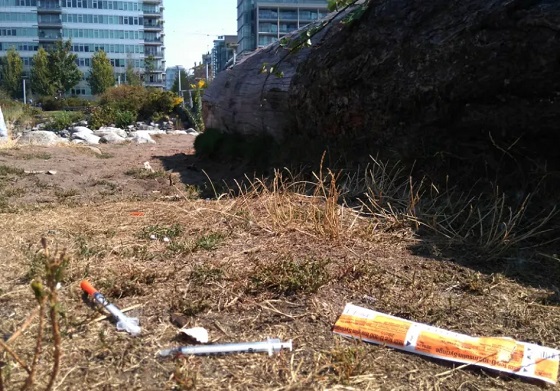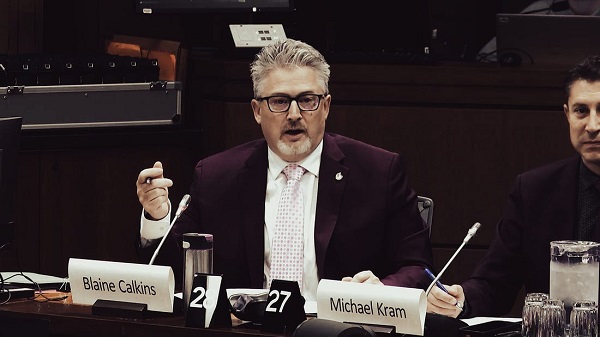Health
Hospital wants to pull the plug on inhumanely neglected 23-year-old woman who is not brain dead

From LifeSiteNews
Montefiore Hospital in Brooklyn is neglecting Amber Ebanks, but experts who have seen the student say her body is functioning and that she could improve with proper treatment.
Amber Ebanks, a 23-year-old Jamaican business student, drove herself to Montefiore Hospital in the Bronx for elective surgery on July 30. But her procedure went awry, leading to an intraoperative stroke and brain swelling that worsened over time. Now, her family is fighting for Amber’s life while the hospital wants to pull the plug.
In February, Amber was found to have a ruptured arteriovenous malformation (AVM), a tangle of abnormal arteries and veins in her brain. Thankfully, after the rupture she was able to return to life as normal. Her doctors recommended that she undergo an embolization procedure to clot off the abnormal blood vessels in her brain in hopes of preventing further rupturing and brain damage. Unfortunately, during the embolization procedure, one of the major arteries supplying blood to Amber’s brain was unintentionally occluded, and her procedure was also complicated by a type of bleeding around the brain called a subarachnoid hemorrhage. Thus, she was taken to the ICU, placed in a medically induced coma, and treated for brain swelling.
Just 10 days later, on August 9, her doctors declared her to be “brain dead.” But there were problems with this diagnosis. The Determination of Death statute in New York and the Uniform Determination of Death Act (UDDA) both state:
“An individual who has sustained either:
- irreversible cessation of circulatory and respiratory functions; or
- irreversible cessation of all functions of the entire brain, including the brain stem, is dead.”
Amber Ebanks meets neither the first nor the second of these criteria. Her circulatory and respiratory functions continue: her heart is still beating, and her lungs are absorbing oxygen and releasing carbon dioxide. And she does not have the irreversible cessation of all functions of her brain, since she is maintaining her own body temperature, which is a brain function.
Moreover, the new 2023 American Academy of Neurology brain death guideline indicates that metabolic derangements such as high serum sodium levels may confound a brain death evaluation. According to Dr. Paul Byrne, Amber’s sodium levels were very high prior to her brain death determination, with readings over 160meq/L (normal sodium levels range from 135-145 meq/L). Not only can high sodium levels cause abnormal brain functioning, but they can also cause blood vessels in the brain to rupture, causing more brain bleeding – the very problems that Amber’s doctors should be interested in preventing. Also, even though high levels of carbon dioxide are known to exacerbate brain swelling, her doctors have not been checking these levels or adjusting her ventilator settings to prevent such derangements.
In addition to her ongoing heart, lung, and brain functions, Amber has continuing liver and kidney function. And presumably she still has digestive function, even though the hospital has been refusing to feed her since she came in for her surgery on July 30th. A patient cannot be expected to improve neurologically without nutrition.
Not only is Montefiore Hospital refusing to feed Amber, it’s refusing to provide her with basic wound care and hygiene. When Dr. Byrne, a board-certified pediatrician and neonatologist and brain death expert, flew to New York to see Amber this past week, Amber’s sister Kay showed him a maggot she had removed from her sister’s hair. Referring to hospital personnel, Kay Ebanks said in an ABC News article, “They are some of the cruelest people I have ever known.” Most of Amber’s family lives in Jamaica, and her father has been struggling to get a visa in order to come and see his daughter. Meanwhile, the hospital actually suggested that family members say goodbye to her over the phone.
Dr. Byrne and Dr. Thomas M. Zabiega, a board-certified psychiatrist and neurologist, have both evaluated Amber’s case. They have submitted sworn affidavits that Amber Ebanks is alive, and believe that she has decreased blood flow to her brain causing a quietness of the brain known as Global Ischemic Penumbra (GIP). During GIP, the brain shuts down its function to save energy, but the brain tissue itself remains viable. Drs. Byrne and Zabiega recommend additional time and treatment such as adjusting Amber’s sodium and carbon dioxide levels and treating hormonal deficiencies. They have testified that with proper medical treatments she is likely to continue to live and may obtain limited to full recovery of brain functions, even possibly recovering consciousness.
And there are other health care professionals who are willing to help Amber heal. A long-term care facility on Long Island called New Beginnings has agreed to care for Ebanks for as long as her family would like. “Everybody needs hope. You can’t just give up. Can’t just take them off life support when she needs more time,” New Beginnings founder Allyson Scerri said.
Nevertheless, doctors at Montefiore Hospital are adamant that Amber is “brain dead” and want to disconnect her from her ventilator over the objections of her family. Despite the testimony of qualified doctors and experts, the judge assigned to her case is requiring that a New York-licensed physician be found to evaluate Amber and give testimony about her condition. Until then, Amber remains unfed, uncared for, and neglected in an American hospital, to the point of her sister having to remove vermin from her hair.
Amber Ebanks is very much alive despite receiving little to no ongoing treatment to assist with the healing of her brain. She does not meet the medical or legal criteria for death. All she needs are proper ventilator therapy, a balancing of her fluids and electrolytes, nutrition via a feeding tube, and hormonal replacement: treatments that are commonplace in medicine today. It is shameful that her family has had to beg for these treatments and even go to court to try to force the hospital to provide them.
Heidi Klessig, MD is a retired anesthesiologist and pain management specialist who writes and speaks on the ethics of organ harvesting and transplantation. She is the author of “The Brain Death Fallacy” and her work may be found at respectforhumanlife.com.
Addictions
The Shaky Science Behind Harm Reduction and Pediatric Gender Medicine


By Adam Zivo
Both are shaped by radical LGBTQ activism and questionable evidence.
Over the past decade, North America embraced two disastrous public health movements: pediatric gender medicine and “harm reduction” for drug use. Though seemingly unrelated, these movements are actually ideological siblings. Both were profoundly shaped by extremist LGBTQ activism, and both have produced grievous harms by prioritizing ideology over high-quality scientific evidence.
While harm reductionists are known today for championing interventions that supposedly minimize the negative effects of drug consumption, their movement has always been connected to radical “queer” activism. This alliance began during the 1980s AIDS crisis, when some LGBTQ activists, hoping to reduce HIV infections, partnered with addicts and drug-reform advocates to run underground needle exchanges.
The Bureau is a reader-supported publication.
To receive new posts and support my work, consider becoming a free or paid subscriber.
In the early 2000s, after the North American AIDS epidemic was brought under control, many HIV organizations maintained their relevance (and funding) by pivoting to addiction issues. Despite having no background in addiction medicine, their experience with drug users in the context of infectious diseases helped them position themselves as domain experts.
These organizations tended to conceptualize addiction as an incurable infection—akin to AIDS or Hepatitis C—and as a permanent disability. They were heavily staffed by progressives who, influenced by radical theory, saw addicts as a persecuted minority group. According to them, drug use itself was not the real problem—only society’s “moralizing” norms.
These factors drove many HIV organizations to lobby aggressively for harm reduction at the expense of recovery-oriented care. Their efforts proved highly successful in Canada, where I am based, as HIV researchers were a driving force behind the implementation of supervised consumption sites and “safer supply” (free, government-supplied recreational drugs for addicts).
From the 2010s onward, the association between harm reductionism and queer radicalism only strengthened, thanks to the popularization of “intersectional” social justice activism that emphasized overlapping forms of societal oppression. Progressive advocates demanded that “marginalized” groups, including drug addicts and the LGBTQ community, show enthusiastic solidarity with one another.
These two activist camps sometimes worked on the same issues. For example, the gay community is struggling with a silent epidemic of “chemsex” (a dangerous combination of drugs and anonymous sex), which harm reductionists and queer theorists collaboratively whitewash as a “life-affirming cultural practice” that fosters “belonging.”
For the most part, though, the alliance has been characterized by shared tones and tactics—and bad epistemology. Both groups deploy politicized, low-quality research produced by ideologically driven activist-researchers. The “evidence-base” for pediatric gender medicine, for example, consists of a large number of methodologically weak studies. These often use small, non-representative samples to justify specious claims about positive outcomes. Similarly, harm reduction researchers regularly conduct semi-structured interviews with small groups of drug users. Ignoring obvious limitations, they treat this testimony as objective evidence that pro-drug policies work or are desirable.
Gender clinicians and harm reductionists are also averse to politically inconvenient data. Gender clinicians have failed to track long-term patient outcomes for medically transitioned children. In some cases, they have shunned detransitioners and excluded them from their research. Harm reductionists have conspicuously ignored the input of former addicts, who generally oppose laissez-faire drug policies, and of non-addict community members who live near harm-reduction sites.
Both fields have inflated the benefits of their interventions while concealing grievous harms. Many vulnerable children, whose gender dysphoria otherwise might have resolved naturally, were chemically castrated and given unnecessary surgeries. In parallel, supervised consumption sites and “safer supply” entrenched addiction, normalized public drug use, flooded communities with opioids, and worsened public disorder—all without saving lives.
In both domains, some experts warned about poor research practices and unmeasured harms but were silenced by activists and ideologically captured institutions. In 2015, one of Canada’s leading sexologists, Kenneth Zucker, was fired from the gender clinic he had led for decades because he opposed automatically affirming young trans-identifying patients. Analogously, dozens of Canadian health-care professionals have told me that they feared publicly criticizing aspects of the harm-reduction movement. They thought doing so could invite activist harassment while jeopardizing their jobs and grants.
By bullying critics into silence, radical activists manufactured false consensus around their projects. The harm reductionists insist, against the evidence, that safer supply saves lives. Their idea of “evidence-based policymaking” amounts to giving addicts whatever they ask for. “The science is settled!” shout the supporters of pediatric gender medicine, though several systematic reviews proved it was not.
Both movements have faced a backlash in recent years. Jurisdictions throughout the world are, thankfully, curtailing irreversible medical procedures for gender-confused youth and shifting toward a psychotherapy-based “wait and see” approach. Drug decriminalization and safer supply are mostly dead in North America and have been increasingly disavowed by once-supportive political leaders.
Harm reductionists and queer activists are trying to salvage their broken experiments, occasionally by drawing explicit parallels between their twin movements. A 2025 paper published in the International Journal of Drug Policy, for example, asserts that “efforts to control, repress, and punish drug use and queer and trans existence are rising as right-wing extremism becomes increasingly mainstream.” As such, there is an urgent need to “cultivate shared solidarity and action . . . whether by attending protests, contacting elected officials, or vocally defending these groups in hostile spaces.”
How should critics respond? They should agree with their opponents that these two radical movements are linked—and emphasize that this is, in fact, a bad thing. Large swathes of the public understand that chemically and surgically altering vulnerable children is harmful, and that addicts shouldn’t be allowed to commandeer public spaces. Helping more people grasp why these phenomena arose concurrently could help consolidate public support for reform and facilitate a return to more restrained policies.
Adam Zivo is director of the Canadian Centre for Responsible Drug Policy.
For the full experience, please upgrade your subscription and support a public interest startup.
We break international stories and this requires elite expertise, time and legal costs.
Health
Leslyn Lewis urges Canadians to fight WHO pandemic treaty before it’s legally binding

From LifeSiteNews
Conservative MP Leslyn Lewis is urging Canadians to demand a parliamentary debate on the WHO Pandemic Agreement, highlighting risks to national sovereignty.
Conservative Member of Parliament (MP) Leslyn Lewis called on Canadians to petition against the World Health Organization’s (WHO) pandemic treaty before it becomes legally binding.
In an October 23 post on X, Lewis encouraged Canadians to demand that politicians debate the WHO Pandemic Agreement before it becomes law after warnings that the treaty could undermine national freedom and lead to global surveillance.
“I have raised red flags about its implications on Canada’s health sovereignty and the federal government’s willingness to enter a legally binding treaty of this weight without any input from Parliament,” she declared.
In May, Canada, under Liberal Prime Minister Mark Carney, adopted the treaty despite warnings that the agreement gives the globalist entity increased power in the event of another “pandemic.”
However, Lewis revealed that since the agreement has yet to be officially signed, Canada is not bound to it and can still make amendments.
“We are now in a critical window of opportunity to ask tough questions and debate the treaty before it is signed by the Minister of Foreign Affairs and binds our nation,” she explained.
Lewis encouraged Canadians to sign a petition calling for a debate of the agreement as well as contacting their local MPs to request a parliamentary review of the treaty.
Lewis revealed that Canadians’ persistent opposition to the treaty has already resulted in some of the more dangerous clauses, including restricting free speech, freedom of movement, and government surveillance, being removed from the final agreement.
“Thanks to the engagement of countless Canadians and concerned citizens around the world, the most extreme provisions in the WHO Pandemic Treaty were removed — these measures would have undermined national healthcare sovereignty and given international bureaucrats sweeping powers,” Lewis declared.
“The removal of provisions on vaccine mandates, misinformation and disinformation, censorship requirements, travel restrictions, global surveillance, and mandatory health measures happened because people paid attention and spoke up,” she continued.
Among the most criticized parts of the agreement is the affirmation that “the World Health Organization is the directing and coordinating authority on international health work, including on pandemic prevention, preparedness and response.”
While the agreement claims to uphold “the principle of the sovereignty of States in addressing public health matters,” it also calls for a globally unified response in the event of a pandemic, stating plainly that “(t)he Parties shall promote a One Health approach for pandemic prevention, preparedness and response.”
-

 Alberta1 day ago
Alberta1 day agoFrom Underdog to Top Broodmare
-

 Business10 hours ago
Business10 hours agoTrans Mountain executive says it’s time to fix the system, expand access, and think like a nation builder
-

 Economy1 day ago
Economy1 day agoIn his own words: Stunning Climate Change pivot from Bill Gates. Poverty and disease should be top concern.
-

 Business1 day ago
Business1 day agoPaying for Trudeau’s EV Gamble: Ottawa Bought Jobs That Disappeared
-

 Business1 day ago
Business1 day agoCBC uses tax dollars to hire more bureaucrats, fewer journalists
-

 International8 hours ago
International8 hours agoBiden’s Autopen Orders declared “null and void”
-

 National1 day ago
National1 day agoElection Officials Warn MPs: Canada’s Ballot System Is Being Exploited
-

 Addictions1 day ago
Addictions1 day agoThe Shaky Science Behind Harm Reduction and Pediatric Gender Medicine





